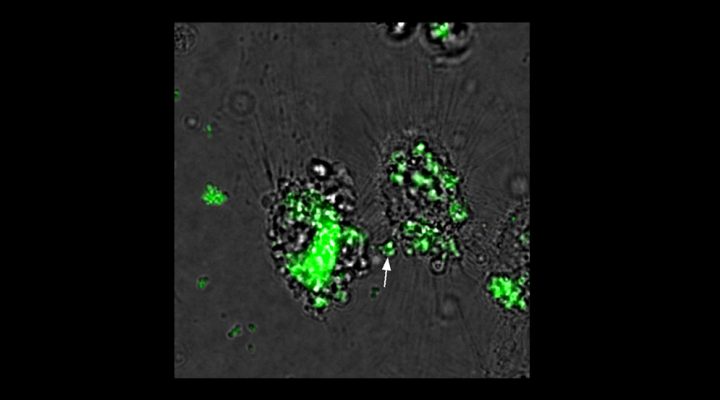BIOLOGICAL AND HEALTH SCIENCES
Scientists reveal how bovine brucellosis bacteria leave cells to infect others
CONICET and UNSAM researchers led a study that could serve for the future development of effective strategies to control a disease that affects livestock and people.
For the first time and through live video microscopy, specialists from CONICET and UNSAM managed to “film” in in vitro studies how bovine brucellosis bacteria leave cells to infect others. The paper was published in mBio, a journal of the Society and the Academy of Microbiology of the United States.
Bovine brucellosis is one of the world’s most important zoonoses (diseases that animals transmit to humans) due to the number of people it affects. There are no vaccines for humans and those for animals are not 100 percent effective.
“Understanding the central processes of the biology of a pathogen is the starting point for the development of new therapeutic tools,” says Juan Manuel Spera, first author of the study and CONICET researcher in the laboratory led by Juan Esteban Ugalde at the Instituto de Investigaciones Biotecnológicas (IIBio, CONICET-UNSAM).
There is a lot of information about how Brucella abortus (the pathogen of bovine brucellosis) and in general all pathogens adhere, infect and replicate inside the cell, but little was known about how they leave the interior to infect other cells. “In the case of Brucella, the exit mechanism was totally unknown. In fact, our study is the first in which the bacterium is observed leaving an infected cell and also infecting a neighboring cell”, Spera explains.
The authors of the study observed the release of the bacteria in mouse and human cell cultures. After analyzing the images, they discovered that part of the bacteria that leave is covered with a layer called the “eukaryotic membrane” that they form from materials that they “seize” from the infected cell itself. “It is possible that this membrane provides the bacterium with protection against antibodies or antibiotics while it infects a neighboring cell. Later studies will have to confirm it”, points out the CONICET researcher. And he adds: “When we applied some compounds that eliminated the membranes that covered the bacteria, their ability to infect other cells decreased significantly.”
Besides, the team managed to describe at the molecular level regions of the membranes that cover Brucella abortus during the discharge of infected cells.
“We have revealed information about a stage that is not well known in the infective cycle of the bovine brucellosis bacterium. Knowing this phenomenon in more detail would allow the development of new therapeutic targets and it could even be possible to think about the design of novel vaccines”, Spera says. And he adds: “Many important molecular processes are conserved between different pathogenic species, so the findings in Brucella could be extended to other bacteria whose study is relevant to public health.”
The study was directed by Ugalde, CONICET researcher. And Cecilia Czibener, CONICET researcher, and Francisco Guaimas, principal professional of CONICET and IIBio, participated in the work.
References:
Spera, J. M., Guaimas, F., Czibener, C., & Ugalde, J. E. (2023). Brucella Egresses from Host Cells Exploiting Multivesicular Bodies. Mbio, e03338-22.
By Bruno Geller
Translation: Cintia B. González
